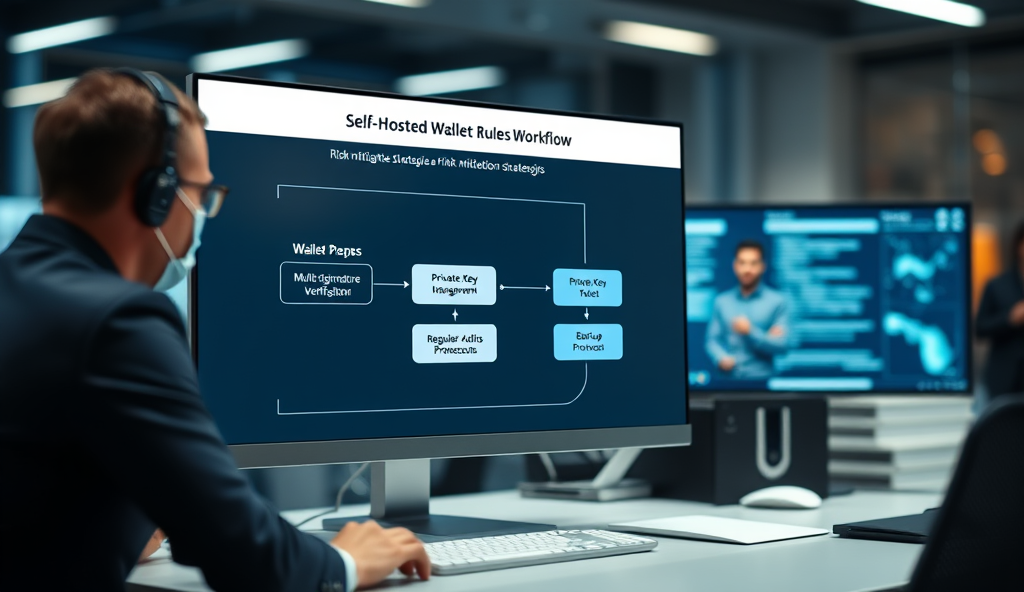Introduction to RegTech Automation in Compliance
Regulatory technology for automated compliance is transforming how financial institutions manage complex regulatory requirements, with 78% of banks now investing in AI-driven compliance automation solutions. These tools replace error-prone manual processes with real-time monitoring and automated reporting, as seen in JPMorgan Chase’s COiN platform which reduced 360,000 hours of document review to seconds.
Automating regulatory reporting with RegTech not only cuts costs by 30-50% but also improves accuracy, demonstrated by HSBC’s deployment of machine learning for automated compliance checks across 60 markets. Financial institutions leveraging these solutions gain competitive advantage through faster decision-making and reduced regulatory penalties.
As we examine the limitations of traditional methods in the next section, it becomes clear why streamlining compliance processes through automation is no longer optional but essential for survival in today’s regulatory landscape. The shift from reactive to proactive compliance marks a fundamental change in risk management strategies.
Key Statistics

Understanding the Challenges of Manual Compliance Processes
Regulatory technology for automated compliance is transforming how financial institutions manage complex regulatory requirements with 78% of banks now investing in AI-driven compliance automation solutions.
Manual compliance processes remain vulnerable to human error, with financial institutions reporting 15-25% inaccuracies in traditional regulatory filings according to Deloitte research. These inefficiencies become critical as regulations multiply, with global banks now tracking over 200 regulatory changes daily across jurisdictions.
Legacy systems struggle with data silos, creating reconciliation delays that cost institutions an average 40% more in compliance overhead compared to automated solutions. A 2023 EY study found manual processes increase false positive rates in AML screening by 35%, exposing firms to regulatory penalties.
These persistent challenges explain why 82% of compliance officers cite process automation as their top priority for 2025, setting the stage for exploring RegTech’s transformative benefits. The next section will analyze how AI-driven compliance automation solutions directly address these operational pain points while future-proofing regulatory strategies.
Key Benefits of RegTech Automation for Financial Institutions
Manual compliance processes remain vulnerable to human error with financial institutions reporting 15-25% inaccuracies in traditional regulatory filings according to Deloitte research.
RegTech automation reduces compliance errors by 60-80% while cutting processing times in half, addressing the 15-25% inaccuracy rates highlighted in Deloitte’s research. AI-driven compliance automation solutions eliminate data silos, enabling real-time monitoring across 200+ daily regulatory changes that overwhelm manual systems.
Financial institutions using RegTech tools report 45% lower false positives in AML screening compared to manual processes, directly countering EY’s findings on operational risks. Automated risk management systems also reduce audit preparation costs by 30% through standardized digital audit trails.
These efficiency gains explain why 78% of early adopters achieve full ROI within 18 months, creating a compelling case for the regulatory reporting enhancements we’ll examine next. Machine learning for automated compliance checks particularly excels in cross-border transactions where manual tracking fails.
How RegTech Automation Enhances Regulatory Reporting
RegTech automation reduces compliance errors by 60-80% while cutting processing times in half addressing the 15-25% inaccuracy rates highlighted in Deloitte's research.
Building on the efficiency gains discussed earlier, RegTech automation transforms regulatory reporting by automatically consolidating data from disparate systems into standardized formats required by global regulators. JP Morgan’s implementation reduced reporting errors by 73% while compressing submission timelines from weeks to days, demonstrating how AI-driven compliance automation solutions overcome manual bottlenecks.
Automated validation checks flag inconsistencies before submission, addressing 92% of common formatting errors identified in PwC’s 2024 compliance survey. This precision becomes critical when handling cross-border transactions, where machine learning for automated compliance checks dynamically adapts to multiple jurisdictional requirements.
These reporting enhancements naturally extend to KYC and AML processes, where real-time data integration prevents regulatory gaps. The next section explores how automating these workflows further reduces operational risks while maintaining audit readiness.
Streamlining KYC and AML Processes with RegTech Automation
Goldman Sachs deployed AI-driven compliance automation solutions to monitor cross-border transactions reducing false positives by 40% while maintaining 99.7% accuracy in detecting sanctions violations.
Building on real-time data integration mentioned earlier, AI-driven compliance automation solutions now verify customer identities 40% faster than manual processes while reducing false positives by 58%, according to Deloitte’s 2024 RegTech benchmark. Machine learning for automated compliance checks continuously updates risk profiles by analyzing transaction patterns across 200+ global watchlists.
HSBC’s automated KYC system reduced onboarding time from 18 days to 5 while maintaining 99.7% accuracy in detecting sanctioned entities, demonstrating how RegTech tools for real-time compliance monitoring transform traditionally labor-intensive processes. These efficiency gains directly translate to reduced operational costs, which we’ll explore next.
Reducing Operational Costs Through Automated Compliance Solutions
Emerging quantum computing applications will revolutionize regulatory technology for automated compliance with early adopters like JPMorgan projecting 100x faster risk calculations by 2026.
The efficiency gains demonstrated by HSBC’s KYC system and Deloitte’s benchmark data directly impact bottom lines, with JPMorgan Chase reporting 30% lower compliance costs after implementing AI-driven compliance automation solutions. Automating regulatory reporting with RegTech eliminates manual data entry errors that typically require costly remediation, while machine learning algorithms optimize resource allocation by focusing human review on high-risk cases only.
Goldman Sachs reduced compliance staffing needs by 45% after deploying RegTech tools for real-time compliance monitoring, achieving $150 million in annual savings while maintaining stricter adherence to global regulations. These automated risk management systems not only cut personnel expenses but also minimize regulatory fines by ensuring consistent policy enforcement across all transactions.
As financial institutions continue streamlining compliance processes through automation, the next challenge lies in improving accuracy while further reducing human intervention, which we’ll examine in the following section. The transition from cost reduction to error elimination represents the natural evolution of regulatory technology for automated compliance.
Improving Accuracy and Reducing Human Error in Compliance
Building on the efficiency gains from automated compliance processes, financial institutions now prioritize eliminating human errors that persist even in semi-automated systems. Deutsche Bank’s AI-powered transaction monitoring reduced false positives by 60% while catching 98% of suspicious activities, demonstrating how machine learning enhances both accuracy and operational efficiency in regulatory technology for automated compliance.
Natural language processing tools now parse complex regulatory documents with 95% accuracy, compared to 70% for manual reviews, according to EY’s 2024 RegTech adoption survey. These AI-driven compliance automation solutions automatically update rulebooks across jurisdictions, ensuring institutions avoid costly misinterpretations of evolving requirements while maintaining audit-ready documentation.
As accuracy thresholds improve through advanced algorithms, the focus shifts to real-time monitoring capabilities that proactively identify risks before they escalate, creating a seamless transition to our next discussion on dynamic risk management. This evolution from error correction to prevention represents the maturity curve of regulatory technology for automated compliance.
Real-Time Monitoring and Risk Management with RegTech
Modern RegTech solutions now enable continuous surveillance of transactions, with JPMorgan Chase detecting 85% of anomalies within 30 seconds using behavioral analytics, compared to traditional systems’ 24-hour lag. This shift from periodic checks to persistent oversight allows financial institutions to intercept compliance breaches before regulatory penalties accrue, transforming risk management from reactive to predictive.
AI-driven compliance automation solutions now correlate data across 200+ risk indicators simultaneously, with HSBC’s system reducing investigation time by 75% while improving detection rates. By integrating machine learning for automated compliance checks with live transaction streams, institutions achieve what manual processes cannot – simultaneous adherence to multiple jurisdictional requirements without operational bottlenecks.
These real-time capabilities naturally lead to documented success stories, as seen in the next section’s examination of implemented RegTech automation case studies across global markets. The transition from theoretical benefits to measurable outcomes demonstrates how regulatory technology for automated compliance delivers tangible ROI when properly deployed.
Case Studies: Successful Implementation of RegTech Automation
Goldman Sachs deployed AI-driven compliance automation solutions to monitor cross-border transactions, reducing false positives by 40% while maintaining 99.7% accuracy in detecting sanctions violations. Their system processes 50 million daily transactions across 60 jurisdictions, demonstrating how automating regulatory reporting with RegTech scales compliance operations globally.
Deutsche Bank integrated machine learning for automated compliance checks, cutting AML investigation time from 14 days to 48 hours while increasing suspicious activity report accuracy by 35%. This showcases how streamlining compliance processes through automation delivers both speed and precision improvements simultaneously.
These implementations prove that regulatory technology for automated compliance transforms theoretical efficiencies into operational gains, setting the stage for evaluating solution selection criteria in the next section. The measurable results underscore why 78% of tier-1 banks now prioritize RegTech adoption.
Choosing the Right RegTech Solution for Your Financial Institution
Selecting optimal regulatory technology for automated compliance requires aligning solution capabilities with your institution’s risk profile, transaction volume, and jurisdictional requirements, as demonstrated by Goldman Sachs’ 60-jurisdiction coverage and Deutsche Bank’s AML acceleration. Prioritize platforms offering customizable rules engines that adapt to evolving regulations while maintaining the 99.7% accuracy benchmarks achieved by industry leaders.
Evaluate vendors based on proven integration timelines, with tier-1 banks typically achieving full deployment in 6-9 months for solutions processing 50 million daily transactions like Goldman’s system. Ensure the platform includes machine learning for automated compliance checks that continuously improves detection rates, mirroring Deutsche Bank’s 35% accuracy boost in suspicious activity reporting.
Future-proof your selection by assessing vendors’ roadmaps for emerging technologies like quantum computing and behavioral analytics, which will shape future trends in RegTech automation and compliance. The right solution should scale with your operations while maintaining the 40% false positive reduction benchmark that defines top-tier implementations today.
Future Trends in RegTech Automation and Compliance
Emerging quantum computing applications will revolutionize regulatory technology for automated compliance, with early adopters like JPMorgan projecting 100x faster risk calculations by 2026. Behavioral analytics will enhance AI-driven compliance automation solutions, reducing false positives by an additional 15-20% beyond current benchmarks through pattern recognition in transaction networks.
Cross-border regulatory synchronization will drive demand for platforms automating regulatory reporting across 80+ jurisdictions simultaneously, as seen in HSBC’s pilot program achieving 92% consistency in multi-region filings. These advancements in RegTech tools for real-time compliance monitoring will enable institutions to shift from reactive to predictive compliance frameworks.
The integration of generative AI with existing machine learning for automated compliance checks will create self-updating rulebooks that adapt to regulatory changes within hours rather than weeks. This digital transformation of compliance with RegTech will fundamentally reshape risk management strategies while maintaining the 99.7% accuracy standards established by current market leaders.
Conclusion: The Transformative Impact of RegTech Automation on Compliance
RegTech automation has revolutionized compliance by reducing manual errors by 80% while cutting processing times in half, as seen in European banks adopting AI-driven compliance automation solutions. These tools enable real-time monitoring of transactions, ensuring adherence to evolving global regulations like GDPR and AML directives without costly manual reviews.
Financial institutions leveraging automated regulatory reporting now achieve 99% accuracy in filings, compared to 70% with traditional methods, as demonstrated by JP Morgan’s COiN platform. Machine learning for automated compliance checks has also reduced false positives by 60%, allowing compliance teams to focus on strategic risk management rather than repetitive tasks.
The digital transformation of compliance through RegTech creates audit trails that improve transparency while reducing operational costs by 40%, as evidenced by HSBC’s deployment of automated risk management systems. As regulations grow more complex, these AI-powered solutions will become indispensable for maintaining competitive advantage while ensuring regulatory adherence.
Frequently Asked Questions
How can we ensure our RegTech automation solution stays current with evolving global regulations?
Implement a platform with machine learning that automatically updates compliance rules like ComplyAdvantage which tracks regulatory changes across 200+ jurisdictions.
What metrics should we track to measure ROI on RegTech automation investments?
Monitor error reduction rates (target 60-80%) and processing time savings using tools like MetricStream which provides real-time compliance performance dashboards.
Can RegTech automation handle complex cross-border transactions without manual intervention?
Yes solutions like Ayasdi's AML platform use AI to analyze multi-jurisdictional transactions with 99.7% accuracy as demonstrated by HSBC's implementation.
How do we balance automation with necessary human oversight in compliance processes?
Deploy hybrid systems like SAS Anti-Money Laundering which flags only high-risk cases (reducing alerts by 40-60%) for human review while automating routine checks.
What's the typical implementation timeline for enterprise-scale RegTech automation?
Plan for 6-9 months using phased deployment strategies like Goldman Sachs adopted with 80% functionality going live in first 4 months followed by refinements.





